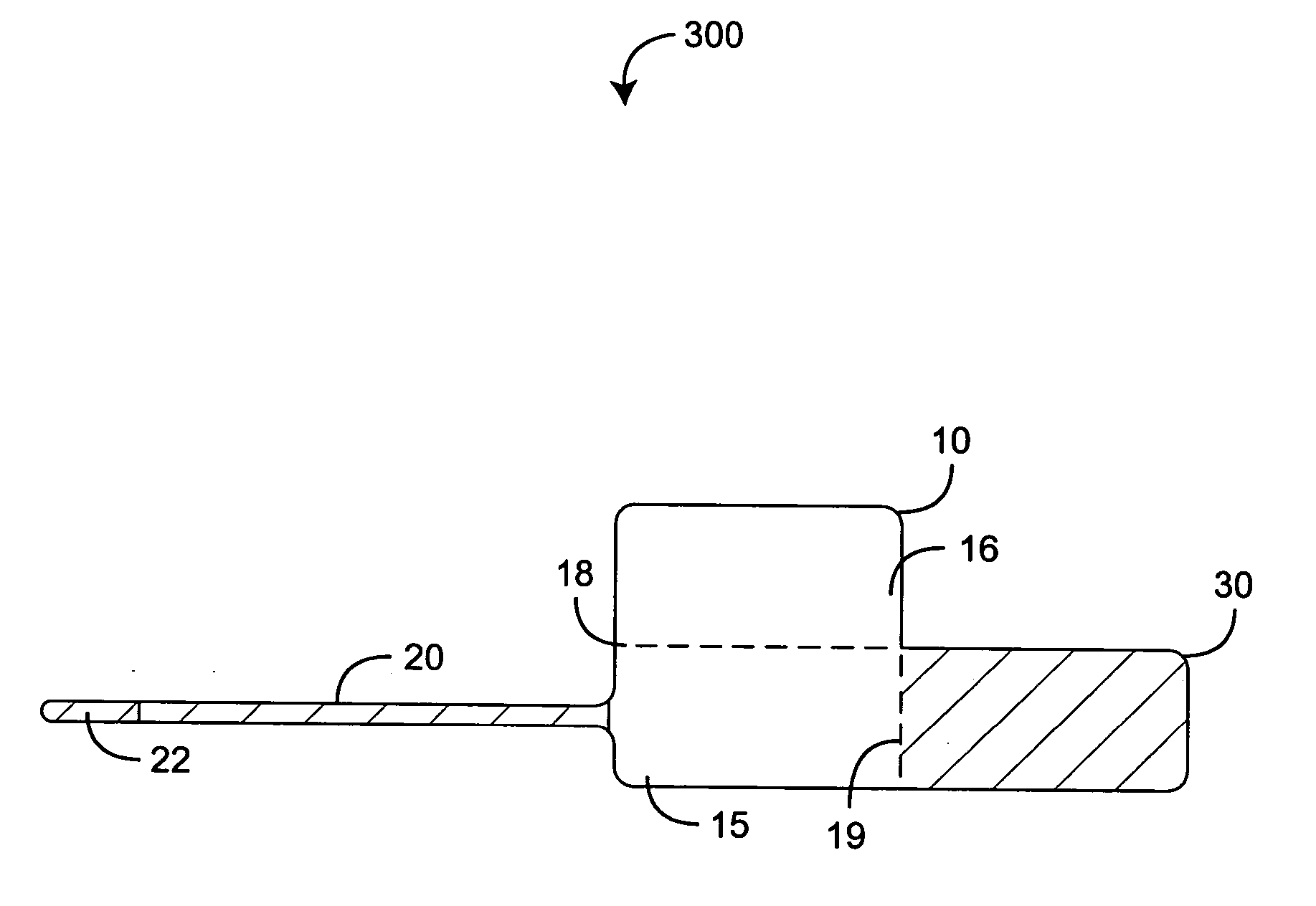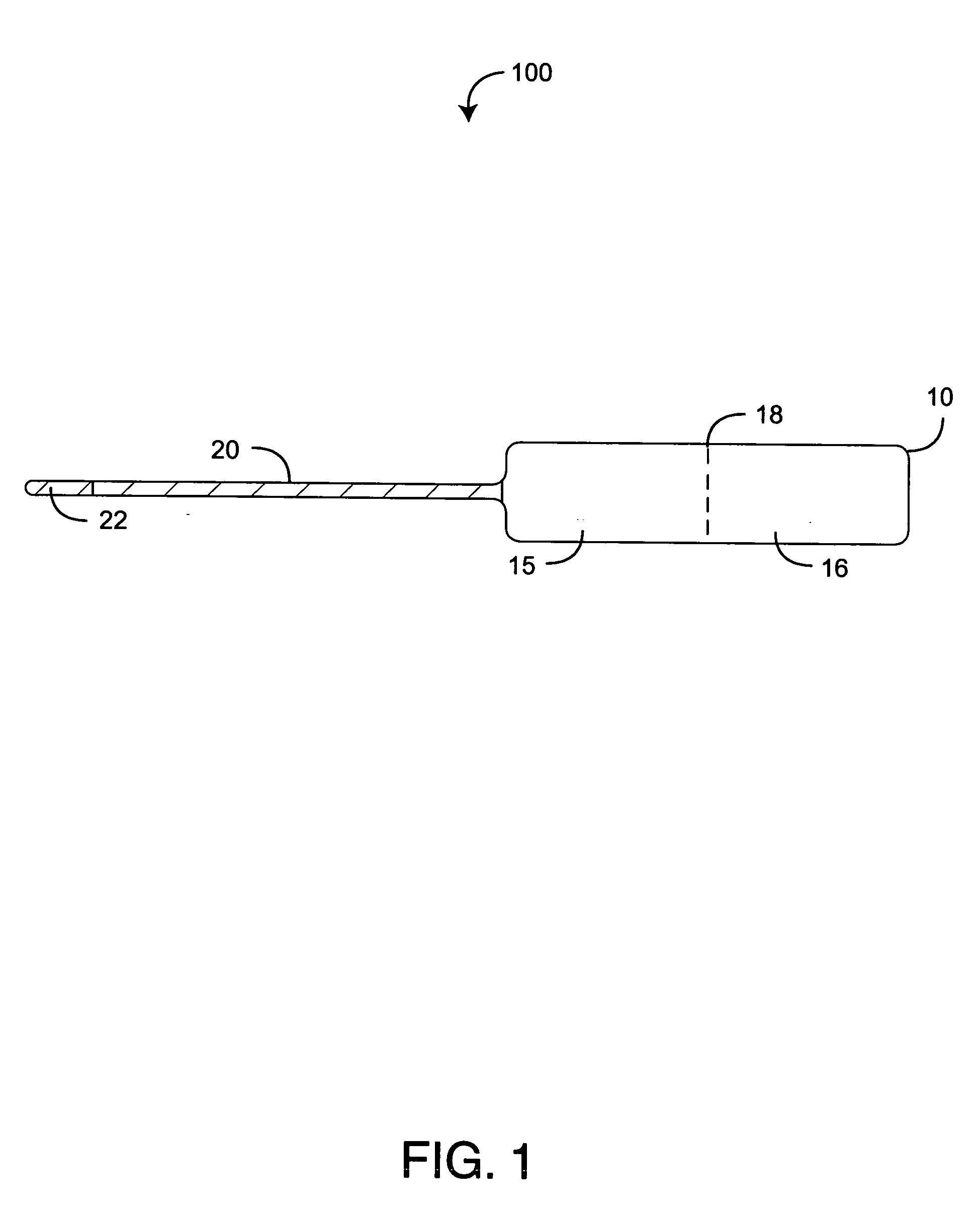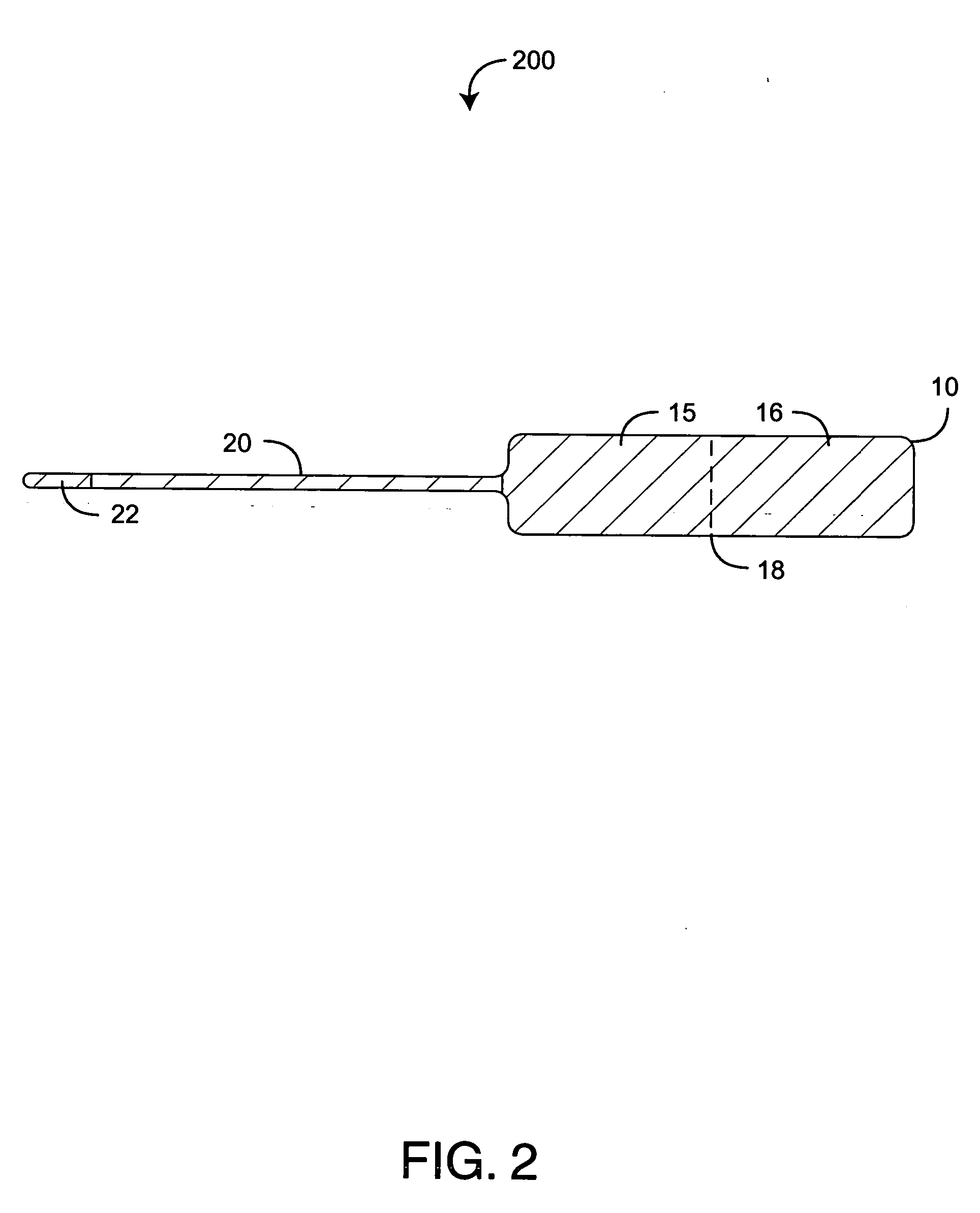Jewelry tag substrate
- Summary
- Abstract
- Description
- Claims
- Application Information
AI Technical Summary
Benefits of technology
Problems solved by technology
Method used
Image
Examples
embodiment 100
[0021] As shown in FIGS. 1-2, the label 10 extends generally inline with the rat tail shank 20. Further, the rat tail shank 20 and the second section 16 extend from opposite ends of the first section 15, and the label fold line 18 extends generally perpendicular to the shank 20 between the sections 15, 16. In a particular embodiment, the rat tail shank 20 is adhesive free except at the shank tip 22. As shown in FIG. 1, one jewelry tag embodiment 100 has a label 10 that is opaque and a rat tail shank 20 that is clear. As such, printing on the label 10 is readily visible, but the shank 20 is not readily visible when attached to jewelry in a display case, for example.
embodiment 200
[0022] As shown in FIG. 2, another jewelry tag embodiment 200 has a label 10 and a rat tail shank 20 that are both clear. Printing on the label 10 is visible if held over an opaque background. Otherwise, the entire tag 200 is not readily visible, such as when attached to jewelry in a display case.
[0023]FIG. 3 illustrates a self-laminating rat tail jewelry tag 300 having a label 10, a rat tail shank 20 and a label fold line 18 that defines sections 15, 16 of the label 10. The jewelry tag 300 further has a flap 30 defined along a flap fold line 19. Advantageously, the flap 30 is adapted to laminate a section of the label 10 and is substantially clear so that printed matter on the laminated label 10 may be read through the flap 30.
[0024] As shown in FIG. 3, the label 10 extends generally perpendicular to the rat tail shank 20, and the flap 30 extends generally inline with the rat tail shank 20. Further, the rat tail shank 20 and the flap 30 extend from opposite ends of a first section...
embodiment 500
[0030] As shown in FIG. 5, a barbell jewelry tag embodiment 500 has a label 50 that is opaque and a bar shank 60 that is clear. In this manner, printing on the label 50 is readily visible, but the bar shank 60 is not readily visible when attached to jewelry in a display case, for example. In a particular embodiment, the bar shank 60 is adhesive free.
[0031] As shown in FIG. 6 a self-laminating barbell jewelry tag 600 embodiment further has a flap 70 advantageously adapted to laminate the label 50. The flap 70 is substantially clear so that printed matter on the laminated label 50 may be read through the flap 70. In one embodiment, individual flaps 75, 76 extend from opposite edges of corresponding label sections 55, 56. In particular, a first flap 75 is defined by a first fold line 45 and extends from one edge of the first section 55 generally perpendicularly to the bar shank 60. A second flap 76 is defined by a second fold line 46 and extends from an opposite edge of the second sect...
PUM
 Login to View More
Login to View More Abstract
Description
Claims
Application Information
 Login to View More
Login to View More - R&D
- Intellectual Property
- Life Sciences
- Materials
- Tech Scout
- Unparalleled Data Quality
- Higher Quality Content
- 60% Fewer Hallucinations
Browse by: Latest US Patents, China's latest patents, Technical Efficacy Thesaurus, Application Domain, Technology Topic, Popular Technical Reports.
© 2025 PatSnap. All rights reserved.Legal|Privacy policy|Modern Slavery Act Transparency Statement|Sitemap|About US| Contact US: help@patsnap.com



